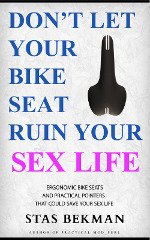46 CANOEING: WHERE IN THE CANOE:
Description
This article is from the Outdoor Activities for Young Children FAQ, by Gloria Logan glogan@atk.com with numerous contributions by others.
46 CANOEING: WHERE IN THE CANOE:
If you are being traditional: Daddy in the back, Mummy in the front,
baby right behind Mummy. Certainly if you are planning to comfort
the child during the trip by nursing then she had better be near the
one with the milk (Just wait until you have tried nursing a baby when
you are both wearing life jackets. I couldn't even zip mine up over my
enlarged, um, chest). Take for granted that your front paddler won't
paddle a lot unless the baby falls asleep. Make sure a favourite
blanket or teddy is easily available so you can put the baby on the
floor of the canoe and let the swaying rock her to sleep. After about
eighteen months they will need less cuddling but are more of a
nuisance: climbing onto your seat from behind, crawling under your
seat, throwing toys overboard, putting their hands in the water.
When Marc was eighteen months old, we went into Algonquin in late June.
He put his hand in the water at first, then his arm to the elbow, then
more and more until about half an hour from the cars on the way home he
tried to put his arm in to the shoulder and toppled head first into the
water! As he floated past his father, Dave reached in, grabbed the large
loop that is at the back of all children's lifejackets, and hauled him
into the canoe. Because we were so close to the cars and there was no
wind, we just dried him off with the towels we had handy, wrapped him
in his mother's coat, and paddled like hell. Any further or any wind,
and we would have stopped and changed him into dry clothes, even built
a fire if necessary. (See the hypothermia thread in rec.backcountry.)
Certainly being as far forward as possible made it more likely he would
be caught by the back paddler. If one canoe has no kids in it you might
like to go last so you can scoop up a "baby overboard" if the parents
miss.
For those who worry, Marc is the only one to go overboard so far.
Neither girl has even come close.
Continue to:

